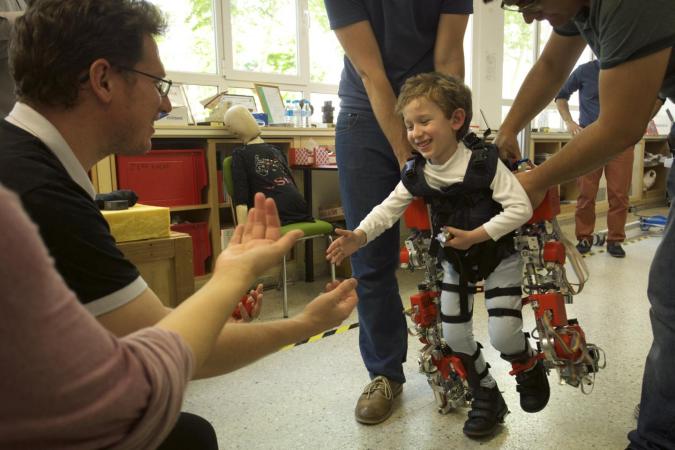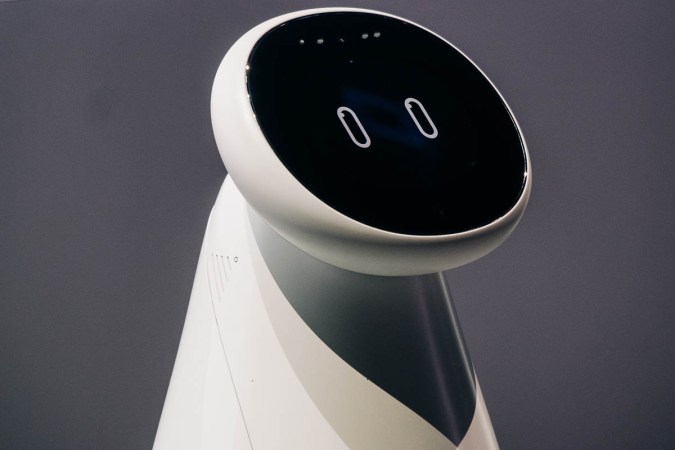

Over the past six million years, humans have become extremely adept at walking on two feet. We’ve even developed numerous strategies to keep us from falling down. But most of these strategies involve quickly engaging multiple muscle groups, and as we age these rapid muscular reflexes fade. This is a main reason why falling, and injuries resulting from it, are such a major problem among older adults.
A new exoskeleton, reported in a study out today in the journal Scientific Reports, is meant to prevent these falls from happening, by using adaptive mechanisms that activate only when it senses that the wearer is about to fall. The researchers say that this easy-to-use exoskeleton could improve the quality of life in older adults.
The exoskeleton works via an algorithm that picks up on subtle muscular changes that predict whether an elderly person is about to fall. Once those changes are detected, the suit kicks into gear by applying force in the opposite direction to stop the fall. To test it out, the researchers equipped eight elderly participants, and two people who had lost one of their legs at a point above the knees, with the device and had them walk on a treadmill whose motions intentionally cause people to slip or trip. In every case, the researchers found that the participants slipped up less when wearing the suit than when they were not, a sign that the algorithm and the mechanics of the device itself were working.

The development of exoskeleton suits has exploded over the last decade, and they’ve mainly been focused on helping people with paralysis. They’ve also been extremely bulky, and require a significant amount of getting-used-to-the-device time. This new suit represents an entirely new approach: a smaller, more intuitive device meant for a population that’s constantly at risk of falling.
However, before something like this can be put to use, there’s a lot of kinks that need to be figured out. The device is still a bulky prototype, and it has only been used in 10 subjects (eight of which were older adults), which is an extremely small sample size. Given that, it’s hard to generalize what those eight participants experience while using the device to what most elderly people would go through. Future studies with a lot more people will be able to determine whether it’s ideally suitable for preventing falls.








